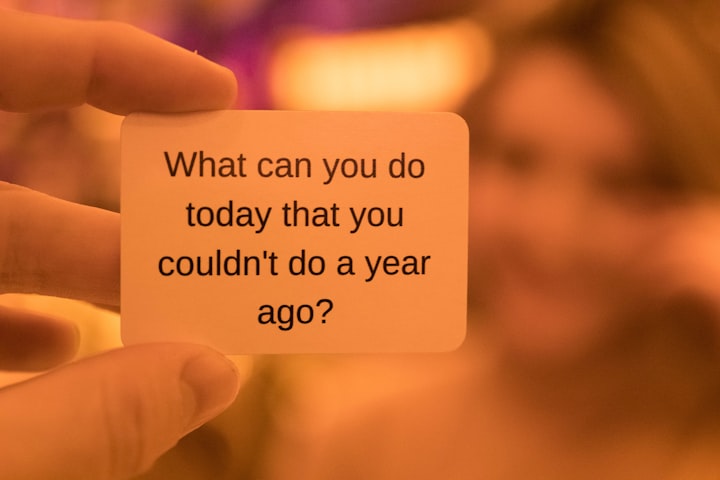A Guide to Quieting and Acknowledging Your Inner Critic
By embracing the importance of nurturing positive inner dialogues concerning healing and creating space to reflect on our mental well-being, we unlock the potential for profound personal growth and understanding.

As someone with ADHD, I've faced significant challenges stemming from my inner critic, a common struggle not limited to ADHD alone but prevalent among individuals with various mental health conditions. This internal battle has often hindered me from seeking support and acknowledging my progress, setbacks, and wins, big and small, for a lot of my mental health journey.
The stigma surrounding mental health fosters feelings of inferiority, negative self-talk, and self-doubt. Why? When we open up about our mental health, most people's reactions tend to evoke shame and embarrassment rather than the support and encouragement needed to overcome these challenges.
Thankfully, these obstacles don't always have to define us; effective strategies exist for silencing our inner critic and cultivating a more compassionate and resilient inner dialogue. Through my experiences and assisting others on similar paths, I've discovered a simple exercise for empowering us to adopt a kinder approach to our inner critic or dialogue.
How?
Exploring the 3Cs and Their Role in Cultivating Strength-Based Language and Balanced Mental Health Approaches is a great tool for helping us learn to catch and become aware of our unhelpful inner dialogue when we're overly hard on ourselves. By asking ourselves the right questions, we can check and acknowledge our inner dialogue, allowing us to take a more empathetic and resilient approach. A change in perspective can foster a healthier inner dialogue and lead to a more positive view of our progress, victories, thoughts, and feelings.
Catch: The first step is becoming aware of your inner critic. Notice when that negative voice starts putting you down. Maybe it happens after a setback before a new challenge or when we're frustrated about how much progress we've made. I know this isn't easy, but it gets easier over time with practice.
Check: Once you've caught the negativity, take a moment to examine it. Ask yourself: Is this thought helpful? Is it based on reality, or am I being too harsh? Meet yourself where you are and gain clarity over your challenging inner dialogue, thoughts, and feelings.
Change: Lastly, it's time to reframe that negative thought. Instead of believing you're a failure, acknowledge the setback and remind yourself of your past successes. Focus on progress, not perfection, because we often make more progress than we realize.
While positive self-talk is often associated with feeling good, its true power lies in offering clarity and grounding during challenging times. By acknowledging negative thoughts and reframing them with patience and empathy, we can more resiliently navigate difficult and tricky situations.
Remember, it's not just about when we go through these experiences but how we navigate them. With consistent practice, healthy self-talk can become a compass that guides us through life's storms. I know doing this isn't easy. It's still challenging, but I've included some links and resources to help you gain a more resilient inner dialogue. by befriending your inner critic.
How can we do this in our mental health journey?
- When you think things like you're a failure and won't succeed, reframe it to thinking, what are some ways I can learn from this experience and improve my skills.
- Reframing I'm stupid with everyone making mistakes and acknowledging those mistakes or that we need support shows strength and courage.
- My emotions matter, and I'm not less than others and need things like a support system, medication, or anything related to my life and well-being.
You can also list self-reflection exercises or questions like the ones in the examples below. It's all about focusing on what works in your journey.
- What are three things I accomplished today?
- What did I learn about myself today?
- What emotions did I experience today, and why?
- What would I like to improve about myself?
- What are my short-term and long-term goals, and what steps can I take to achieve them?
- What activities make me feel energized and fulfilled?
- What activities drain my energy and leave me feeling depleted?
References and Helpful Resources
Sosa, R. (2019, July 16). How to Fight Stigma with Strength-Based Language - Active Minds. Active Minds. https://www.activeminds.org/blog/how-to-fight-stigma-with-strength-based-language/#:~:text=Strengths%2Dbased%20approaches%20focus%20on,
MSc, E. S. (2024, April 25). What Is a Strength-Based Approach? (Incl. Examples & Tools). PositivePsychology.com. https://positivepsychology.com/strengths-based-interventions/
O. (2022, June 16). Using the Mnemonic “ Three Cs” with Children and Adolescents. Beck Institute. https://beckinstitute.org/blog/using-the-mnemonic-three-cs-with-children-and-adolescents/#:~:text=Helping%20clients%20of%20all%20ages,children%20in%20learning%20this%20process
Ackerman, C. E. (2024, March 4). Cognitive Restructuring Techniques for Reframing Thoughts. PositivePsychology.com. https://positivepsychology.com/cbt-cognitive-restructuring-cognitive-distortions/
Schaffner, A. K. (2024, March 15). Living With the Inner Critic: 8 Helpful Worksheets (+ PDF). PositivePsychology.com. https://positivepsychology.com/inner-critic-worksheets/
About the Creator
Sandy Pace
I’m a freelance writer with ADHD and anxiety. Who’s passionate about mental health awareness and other related topics. And has written for publications like ADDitude Magazine, Thought Catalog, TotallyADD, and other publications.






Comments
There are no comments for this story
Be the first to respond and start the conversation.